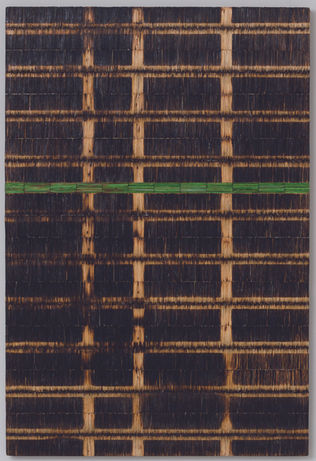
Gaston Zvi Ickowicz - Turmus Aya, June 2023, 2023
The exhibition seeks to reflect the current atmosphere in a region that is constantly on the brink of ignition, set against a backdrop of trends of radicalization, degradation, and the devaluation of human life in Israeli reality.
Flammable Materials
2025
Curator: Dr. Shir Aloni Yaari
Flammable Materials
2025
Curator: Dr. Shir Aloni Yaari
The exhibition seeks to reflect the current atmosphere in a region that is constantly on the brink of ignition, set against a backdrop of trends of radicalization, degradation, and the devaluation of human life in Israeli reality.
Flammable materials are easily combustible materials that keep burning even when moved away from the ignition source. As such, they hold within them not only the danger of conflagration, but also the fire itself – its duration, outcomes, and burns. The works in this exhibition, some familiar and others presented here for the first time, embody the same dreadful range – between the incendiary potential and the destructive effect of the flames, between the pent-up energy and the embers left behind.
The events of the past year have been and still are imbued with the concrete and metaphorical presence of fire. The concept of fire in Israeli culture, writes art historian Gideon Ofrat, is a core image: it is fanned by the myth of the burning bush, the flame of the alter and the firewood to which Isaac was bound; it is fanned also by the trauma of the burning Jewish towns and the crematoria of the Holocaust, the solemnity of the eternal fire in Yad Vashem, the fire-blackened survivors, and the memorial candle; it embodies the religious and national ethos of Lag BaOmer bonfires, youth movement campfires and fire inscriptions, and the national Torch-Lighting Ceremony; and wildfires in planted forests, in IDF shooting ranges, in warzones, in the volatile Palestinian Intifadas, and the foreign fire that devours homes, communities and individuals.
However, the visual language adopted by the works on display deliberately avoids the pathos this incitive subject appears to call for. Instead, the artists draw on material and medium-based sensibilities, employing strategies of abstraction, disruption, and defamiliarization to evoke a profound sense of disaster and unease. Through a crime-scene aesthetic that relies on hints and traces or generates tension and disquiet—and particularly through the palpable absence of human presence, the works reveal how fire and its explosive charges articulate ongoing processes of disintegration, moral corruption, and the devaluation of human life.
Artists: Deganit Berest, Ronit Citri, Yair Hovav, Gaston Zvi Ickowicz, Mahmood Kaiss, Yael Ruhman, Ariel Schlesinger, Chen Shapira





